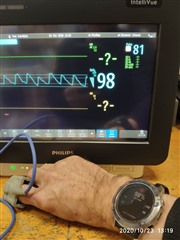Anyone compared Garmin's PulsOx with a medical grade oximeter?
I suspect Garmin is not very good. For example, right now, my Fenix just measured 91%. When I used Samsung's app on my S9, I got 98% (measured on a finger).
On Fenix, I'm getting an average daily readings of around 93-95% but during night I see it dipping to 90 or even 85% (average about 92-93%). Seems low as I don't have any medical condition.
Could it be that for wrist measurements, it's more sensitive to position of the watch? Or blood flow through the wrist?
I don't understand, why there should be such a difference between Fenix and the phone app?



